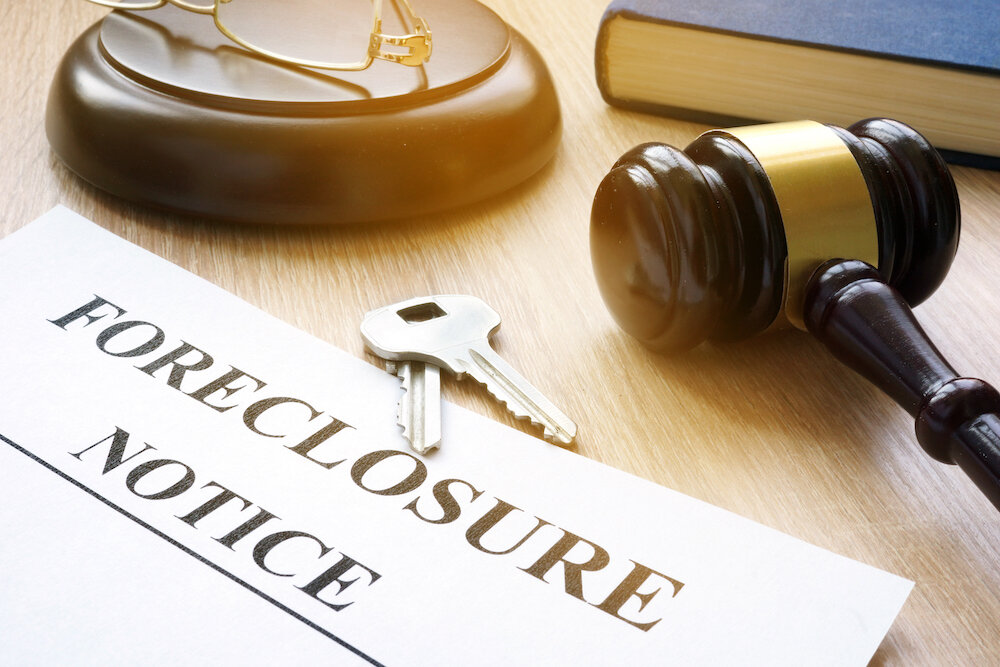Foreclosure Notice of Default in KY – What is It?

Introduction
If you’ve received a Foreclosure Notice of Default (NOD) in Kentucky, you might be feeling a mix of anxiety, confusion, and fear. Foreclosure is a serious legal process that can end in the loss of your home if not handled properly. However, receiving a Notice of Default does not mean the end of the road. In fact, it’s an opportunity to act, explore your options, and take steps to avoid foreclosure.
This article aims to provide you with a comprehensive understanding of the Notice of Default in Kentucky, the foreclosure process, and what you can do to protect your home. If you’re in a situation where you’re struggling to make mortgage payments and facing foreclosure, it’s essential to understand what a Notice of Default is and how to respond effectively.
What is a Notice of Default?
A Notice of Default (NOD) is an official notification from your mortgage lender that you are in default on your loan. It is typically issued after the homeowner has missed several payments (usually three or more) and the lender has decided to begin the legal process of foreclosure. In Kentucky, the foreclosure process is judicial, which means it must go through the court system. The issuance of a Notice of Default is the first legal step that triggers this process.
The Notice of Default is a serious document that informs you that your lender is preparing to foreclose on your home if you do not take action to remedy the situation. It serves as a formal warning that the lender intends to recover the outstanding debt by taking legal action. This document will also outline the amount you owe, any fees or penalties added to the debt, and the steps required to bring the loan current.
Key Components of a Notice of Default
A typical Notice of Default contains several key pieces of information that homeowners must review carefully. Below are the main components you will find in the notice:
- Outstanding Amount: This includes the total amount of money you owe, including overdue mortgage payments, accrued interest, late fees, and any other charges associated with the loan.
- Cure Period: The notice will specify a date by which you must make your mortgage current to avoid further foreclosure proceedings. This period varies, but typically, you’ll have a few weeks or up to 90 days from the date of the notice to bring your mortgage payments up to date.
- The Intent to Foreclose: The notice will state that the lender intends to proceed with foreclosure if you do not resolve the default. This is a legal warning and should be taken seriously.
- Available Options: In some cases, the notice may offer potential solutions to help you avoid foreclosure, such as loan modification or repayment options. This depends on the lender and your specific circumstances.
What Does It Mean for Homeowners?
A Notice of Default is one of the first steps in the foreclosure process, but it does not mean immediate eviction. It’s important to understand that receiving a Notice of Default does not automatically result in the loss of your home. However, if you ignore the notice or fail to act, the foreclosure process will proceed, and you could eventually lose your home.
In Kentucky, once a Notice of Default has been issued, the lender will file a lawsuit in court to foreclose on the property. This is called a judicial foreclosure, and it means that the foreclosure process must go through the Kentucky court system. Once the court issues a judgment of foreclosure, the property will be scheduled for a public auction.
It’s critical to recognize that the issuance of a Notice of Default is not the end of your options. In fact, it’s just the beginning of a series of steps where you can take action to protect your home. The sooner you address the notice, the more options you will have to resolve the situation.
The Foreclosure Process in Kentucky
Understanding the full foreclosure process in Kentucky can help you determine your next steps. Here’s a breakdown of how foreclosure works in Kentucky after a Notice of Default is issued:
- Notice of Default (NOD): The process begins when the lender sends a Notice of Default. This marks the first official step in the foreclosure process.
- Filing a Lawsuit: If the default is not cured by the specified date, the lender will file a lawsuit in court to initiate foreclosure. The court will then schedule a hearing.
- Foreclosure Judgment: After the court hearing, if the judge rules in favor of the lender, a foreclosure judgment will be issued. This gives the lender the legal right to sell the home at a public auction.
- Public Auction: Once the foreclosure judgment is issued, the home will be scheduled for auction. The auction is typically public, and the home will be sold to the highest bidder, which is often the lender or a third party willing to pay the outstanding debt.
- Eviction: If the homeowner does not vacate the property voluntarily after the auction, the lender can seek an eviction order to remove the homeowner from the home.
Throughout this process, it’s important to remember that you still have opportunities to resolve the situation, especially if you are proactive in addressing the default early.
What to Do After Receiving a Notice of Default
Receiving a Notice of Default can be overwhelming, but the most important thing you can do is act quickly. Here are several steps you can take to prevent foreclosure and protect your home:
- Contact Your Lender Immediately: The first thing you should do is contact your lender. They may be willing to work with you to avoid foreclosure. Some options might include:
- Loan Modification: A loan modification can adjust the terms of your loan, such as reducing your interest rate or extending the length of the loan, to make it more affordable.
- Forbearance: A forbearance agreement temporarily suspends or reduces your mortgage payments for a set period. This can give you time to catch up on missed payments.
- Repayment Plan: If you’ve missed payments, the lender may offer a repayment plan to help you pay off the missed amount over time.
- Consider Refinancing: If you have equity in your home and are eligible for a refinancing option, this could lower your monthly payments and make it easier to stay current on your mortgage.
- Seek Professional Advice: A foreclosure attorney can help you understand your rights, negotiate with your lender, and explore other options for avoiding foreclosure. They can guide you through the legal aspects of the foreclosure process and ensure you are taking the right steps.
- Explore Government Programs: There are several government programs designed to help homeowners avoid foreclosure. For example, the Home Affordable Modification Program (HAMP) and Hardest Hit Fund (HHF) offer assistance to homeowners struggling to make their mortgage payments due to financial hardship.
- Sell Your Home: If you cannot afford to keep up with your mortgage payments, selling your home might be a viable option to avoid foreclosure. Selling the home through a traditional sale can be time-consuming, but selling your home to a cash buyer can offer a quicker solution.
- File for Bankruptcy: Filing for bankruptcy can temporarily stop the foreclosure process and give you time to reorganize your finances. This is a drastic measure, and it’s important to consult with an attorney before choosing this option.
For homeowners in Lexington, Kentucky, facing the threat of foreclosure, it’s essential to explore every option available to stop the bank from foreclosing on your home. One of the most effective ways to do this is by selling your home quickly and for cash. This option can help you avoid the lengthy foreclosure process and protect your credit.
For more information on how to stop the bank from foreclosing on your Lexington home, visit our detailed page: How to Stop the Bank From Foreclosing on Your Lexington Home. On this page, you’ll find specific steps you can take, including selling your home for cash to a reputable investor, which can provide you with a fast and straightforward solution to your financial difficulties.
The Risks of Ignoring a Notice of Default
Ignoring a Notice of Default is never a good strategy. If you fail to take action, the lender will proceed with foreclosure, and you may lose your home. Additionally, a foreclosure can severely damage your credit score, making it difficult to obtain loans or mortgages in the future. Foreclosure can stay on your credit report for up to seven years, which can have long-lasting financial consequences.
It’s important to take any foreclosure notice seriously and act immediately. The sooner you take steps to resolve the issue, the more options you will have to save your home and avoid foreclosure.
Conclusion
A Notice of Default in Kentucky is a serious matter, but it doesn’t have to result in the loss of your home. By acting quickly and exploring your options, you can take steps to avoid foreclosure and protect your financial future. Whether you choose to work with your lender, sell your home, or explore other options, it’s essential to respond to a Notice of Default as soon as possible.
If you’re in Lexington and need immediate assistance, White Barn Home Buyers is here to help. We specialize in providing quick cash offers for homes, allowing homeowners to avoid foreclosure and move forward with confidence. Reach out to us today to discuss how we can assist you in selling your home fast and protecting your financial future.
